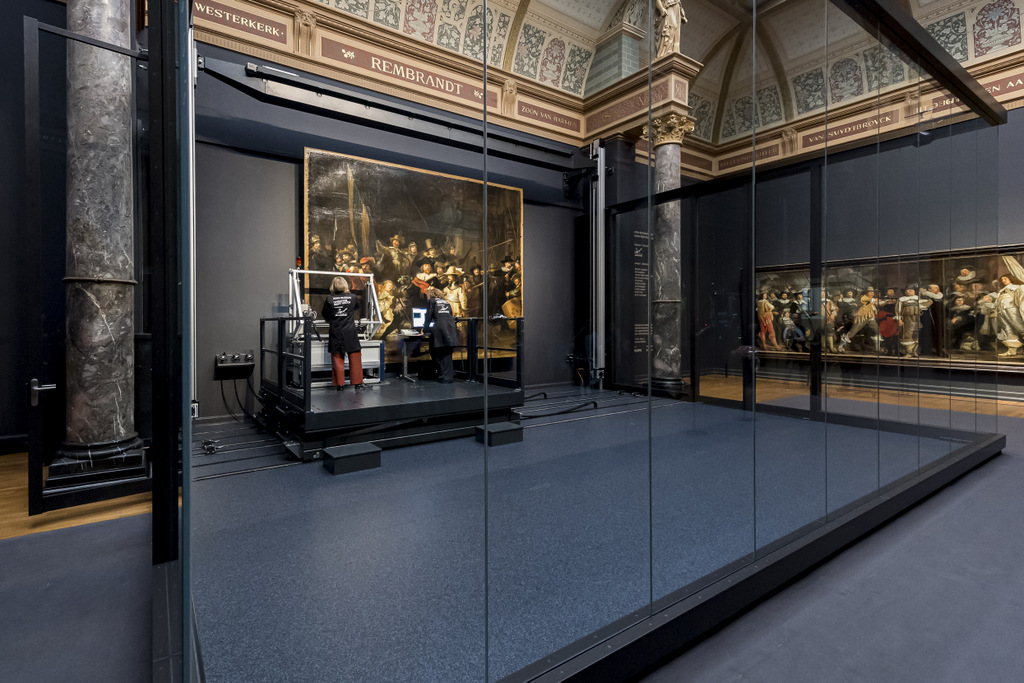Most Detailed Ever Photograph of Rembrandt's Night Watch Goes Online

The Rijksmuseum is publishing the largest and most detailed ever photograph of The Night Watch on its website, making it possible to zoom in on individual brushstrokes and even particles of pigment in the painting. Work on Operation Night Watch will resume on Wednesday 13 May in the glass chamber in the museum.
Image courtesy to Rijksmuseum
The Rijksmuseum is publishing the largest and most detailed ever photograph of The Night Watch on its website, making it possible to zoom in on individual brushstrokes and even particles of pigment in the painting. Work on Operation Night Watch will resume on Wednesday 13 May in the glass chamber in the museum.
aco Dibbits, director of the Rijksmuseum: The Operation Night Watch research team use the very latest technologies and continually push the boundaries of what was thought possible. The photograph is a crucial source of information for the researchers, and online visitors can use it to admire Rembrandt’s masterpiece in minute detail.

Image courtesy to Rijksmuseum
The Rijksmuseum’s imaging team made this photograph of The Night Watch from a total of 528 exposures. The 24 rows of 22 pictures were stitched together digitally with the aid of neural networks. The final image is made up of 44.8 gigapixels (44,804,687,500 pixels), and the distance between each pixel is 20 micrometres (0.02 mm). This enables the scientists to study the painting in detail remotely. The image will also be used to accurately track any future ageing processes taking place in the painting.
Work on the painting will resume tomorrow, Wednesday 13 May. In the otherwise empty Rijksmuseum, the researchers will recommence their study of Rembrandt’s largest painting and its current state. Although work in the glass chamber itself was interrupted for two months due to the coronavirus pandemic, the team continued work at home analysing the research data that had already been collected.
The protocol for working in the glass chamber has been revised to conform with the guidelines set by the government and the National Institute for Public Health and the Environment (RIVM). Consequently, to ensure it is possible to maintain a minimum physical distance of 1.5 metres, no more than two people will work on the painting at any given time.
The second phase of Operation Night Watch, the restoration of the painting, has been rescheduled due to the pandemic. The initial plan was to start after summer 2020, but this is no longer feasible. It will now take place in early 2021.
The Rijksmuseum would not be in a position to carry out Operation Night Watch without the support of benefactors. We are therefore deeply grateful for the continued support and cooperation of our main partner AkzoNobel and the many generous donors, funds and sponsors connected with Operation Night Watch.
